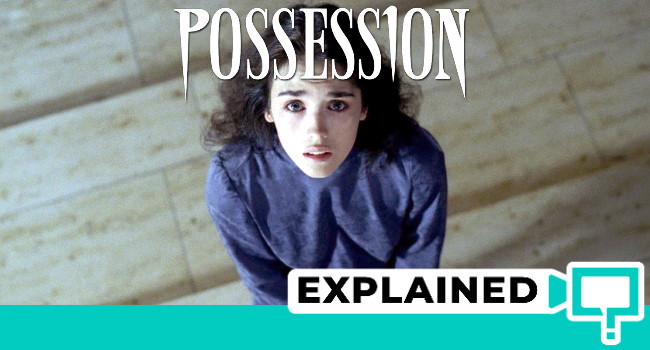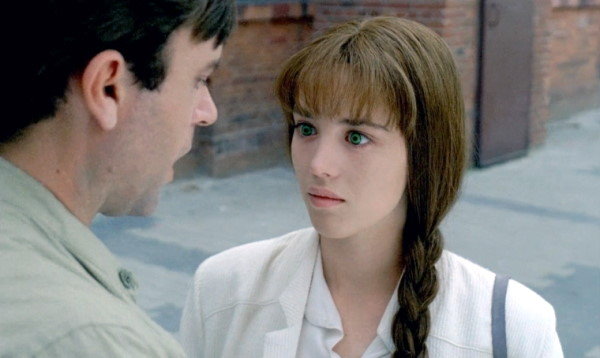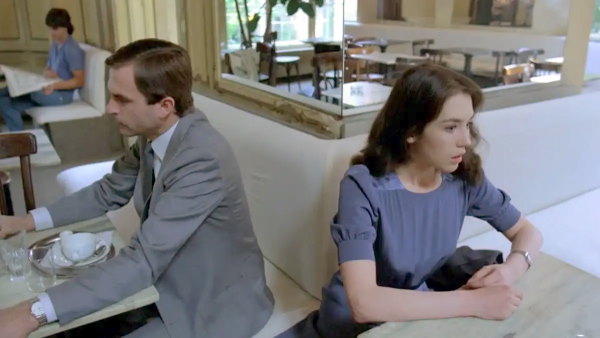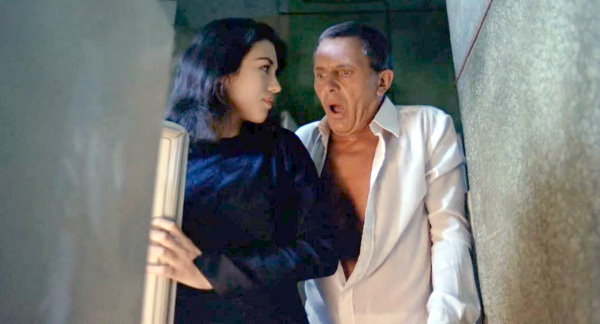Possession is one of the most controversial and hardest-to-watch movies ever. The film is supposed to be an allegory of a divorce and was heavily inspired by Andrzej Żuławski’s divorce. The film is filled with metaphors, symbols, and controversial themes (like self-harm, suicide, extreme jealousy, etc.). It wouldn’t be much of a stretch to say that this movie stands side-by-side with some of the most powerful psychological films out there. Here’s the plot and ending of the 1981 movie Possession explained; spoilers ahead.
Hollywordle – Check out my new Hollywood Wordle game! Where To Watch? To find where to stream any movie or series based on your country, use This Is Barry’s Where To Watch. Oh, and if this article doesn’t answer all of your questions, drop me a comment or an FB chat message, and I’ll get you the answer. You can find other film explanations using the search option on top of the site.
Contents
Here are links to the key aspects of the movie:
- – Plot Explained In Short
- – The Monster as Physical Form of a Toxic Marriage
- – Themes: Split and Divorce
- – Heinrich and Anna
- – Why Was Possession (1981) Banned?
- – Concluding Thoughts
Possession (1981): Plot Explained In Short
Mark returns home from a mysterious voyage (it was hinted that he was a spy) only to find his wife estranged and his child neglected. He tries to put the pieces together and finds out that his wife, Anna has a lover named Heinrich. Mark hires a private investigator to follow Anna and confronts Heinrich, but soon it becomes quite clear that the situation is a lot worse than he initially expected.
Mark starts suspecting that someone else is involved in this whole situation, and his hunches prove true. In her secret apartment, Anna seems to be nurturing a monster that eventually turns into Mark’s doppelganger and directly leads to both Mark’s and Anna’s demise.
While the movie seems quite bizarre, once you start connecting the dots and seeing allegories for what they are, things start making sense.
Possession (1981) Explained: The Monster as Physical Form of a Toxic Marriage
There are many different interpretations of what the monster in Possession is. The most accurate one is that this is their toxic marriage in its physical form. There are so many hints to this, one of them being that everyone who comes from the outside seems to be disgusted by it, while the couple appears to normalize it and even get physically attracted by it.
Why does the monster take Mark’s form?
Well, the most straightforward answer would be to say that it’s an idealized version of Mark, one that doesn’t exist (or no longer exists) but that Anna is so enamored with that she’s ready to kill for it. Even the scene where Anna has sex with the creature is strongly allegorical, seeing as how, to the outsider, the sight is sickening, and no one can understand where the attraction is coming from.
An even better question than “Why does the monster takes Mark’s form?” is whether it takes Mark’s form to begin with.
Why does Helen look the same as Anna?
The best explanation would be that Mark is so deep into his last relationship that he still heavily projects the image of his previous partner on the next one.
This is also supported by the last scene in the movie. Bob pleads with Helen not to open the door. If the creature is their toxic marriage personified, then Bob was the one living under the same roof with it. He recognizes it, no matter how civil its exterior may seem to someone new, and as we’ve seen, he would rather drown than live there again.
Bob even tells Helen not to open the door, to which she replies, “she wants to”. This, alongside the danger she’s in, symbolizes what happens to a third-party getting involved in a marriage/relationship which still hasn’t been sorted out (or has been sorted out recently).
Possession (1981) Themes Explained: Split and Divorce
The Wall
The fact that the movie takes place in West Berlin is no accident either. In 1981 when the movie was filmed, Berlin was still a divided city. This, alongside frequent footage of the Berlin Wall, is a clear analogy of the division between them. The very first shot the movie shows us is the Berlin Wall, which is more than deliberate.
Secrets
The apartments in question are also vastly different. The first apartment (their family home) is new and luxurious, with coffered ceilings, new appliances, and a great view. The apartment where Anna grows the monster is more secretive, old, moldy, and messy. The body parts in the fridge are a literal skeleton in the closet.
Priorities
There’s also the scene where Mark quits his job. No matter the incentive, he realizes it’s not worth his marriage or family. However, by that point, it’s too late to salvage it.
Better Parents
His relationship with Bob is also a strange one. It develops over the movie, with Bob getting more and more lines of text the further Mark is from Anna. It’s not uncommon for people to become better (more attentive) parents after a divorce.
Heinrich and Anna
A lot of failing marriages have a common mutual denominator in the form of a third person. The problem with this third person is that they’re often not an actual participant in the “triangle” but more of a vessel or a catalyst for the events.
Heinrich, for instance, is deliberately meant to represent a perfect lover. He’s handsome, rich, physically stronger than Mark, a caring son, and a devoted lover. Still, getting involved in something so gruesome ultimately leads to his demise. The fact that he does all he can to accommodate Anna doesn’t make a difference since she discards him for the toxic entity on the first occasion.
We’ve already mentioned that Helen has Anna’s face (both are played by Isabella Adjani). However, during one dialog, Mark asks Bob who is prettier. Bob’s answer is only logical “mommy”. To this, Mark wholeheartedly agrees. This further elaborates that beauty, attraction, and devotion are subjective. Sure, Mark projects Anna’s face to every new person he meets but this doesn’t mean that there’s even a remote possibility that he’ll feel the same level of attraction to any of them.
To Helen and Heinrich, the toxicity of Mark and Anna’s relationship serves as some sort of a beacon. They’re attracted to it like moths to a streetlamp for reasons they can’t explain. This is sometimes hard to explain, but it’s a real-life mystery, not just something out of a movie.
Why Was Possession (1981) Banned?
The fact that the movie itself was banned should serve as a surprise to no one. The thing is that Possession has some pretty explicit scenes.
From the scene where Anna’s having explicit sex with the shapeless mass of a monster to the scene where she cuts her neck with an electric knife, many of these things are pretty hard to stomach. Then, there’s the scene where she “miscarries hope” in the alleyway with blood and milk oozing out of her body. In other words, while everything is meaningful and serves a purpose, the ban was hardly surprising.
Also, bear in mind that this all took place during the ‘video nasties’ moral panic of the 1980s, and you’ll see that, regardless of its artistic value, the movie had no chance of avoiding the ban.
Possession (1981): Concluding Thoughts
The movie itself has some visually sickening scenes. However, the emotional explicitness portrayed in Possession is the hardest part to bear. Anyone who has undergone a divorce or a particularly nasty breakup will see these scenes as far more gruesome than the explicit ones.
At one point, Anna cuts her neck with a knife to avoid a particularly tough conversation, and Mark tries cutting his hand to see if the pain is still there. To this, Anna comments, “It doesn’t hurt. Does it?” signifying that physical pain pales compared to an emotional one.
So, for someone watching this shortly after the divorce or a breakup, the familiar scenes of distrust and alienation will be far more unpleasant to watch than those that are just physically gruesome.
What were your thoughts on the plot and ending of the 1981 movie Possession? Do leave your comments below.

Stacey is a talented freelance writer passionate about all things pop culture. She has a keen eye for detail and a natural talent for storytelling. She’s a super-fan of Game of Thrones, Cats, and Indie Rock Music and can often be found engrossed in complex films and books. Connect with her on her social media handles to learn more about her work and interests.




